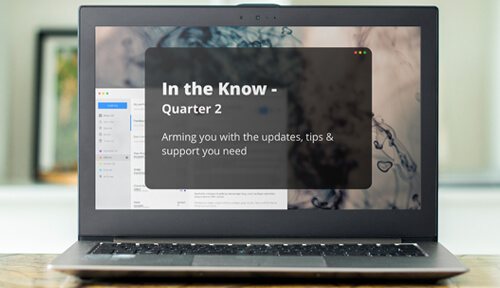
The hard truth is that most IT rollouts fail. Even when every technical issue is resolved, staff must still be informed about, invested in and using the tool.
For IT managers who have already spent months juggling legacy infrastructure, system integrations and an agile technology implementation strategy, the last thing they need is a workforce unwilling to use the new system or software.
And yet, only 29% of IT project implementations are successful. Worse, a gut-wrenching 19% are considered utter failures.
Getting staff on board is crucial. These 7 tips will guide your internal communications to improve overall user adoption strategy. And ensure all your hard work doesn’t go to waste.
1. Building a positive environment
Organizational culture is a big factor for user adoption. If employees don’t feel like they can communicate openly or have adopted a silo mentality, they are less likely to use any new software tools. Address this risk by focusing on culture change communication which supports open discussions, invites feedback and encourages employee participation.

2. Convincing key influencers
Identify thought leaders within the organization, both official and unofficial. Target specific communications to those staff members with the greatest influence to get them on board early. Their advocacy can then have a positive influence on the wider workforce. Persuasive influencer messaging should be considered as part of a comprehensive user adoption communication strategy.
3. Overcoming knowledge gaps
Make a communication plan for users and start early in the project. Be sure to include messages that cover the benefits of the new software, the functionality to be provided, the relationship to existing systems and processes, timeframes for deployment, and what support and ongoing training are available.

4. Speaking their language
IT people do not tend to think like most end users. Avoid complex language or concepts that might intimidate end users in your communications. Keep messages simple and relevant to specific needs, regardless of how complex the digital transformation project you’re implementing may be. Overlong or incomprehensible messages will see users switch off.
5. Setting realistic expectations
Manage user expectations and be open about the fact the new software won’t be a silver bullet to solve all problems. Users won’t be disappointed if they understand what functionality the software actually provides. They’ll only be disappointed if their expectations aren’t met, however unrealistic they were. Communicate appropriate disadvantages too – this helps make messages more credible.

6. Tracking attitudes
Understand user perceptions of the new software to gauge how well it has been received and identify any areas of concern. Monitor discussions in online forums and the questions asked through helpdesks. A staff survey with built in recurrence for unanswered surveys can be an effective way to assess what’s working, measure attitudes, identify gaps in knowledge and help resolve issues.
7. Squashing the grapevine
A workplace grapevine or rumor mill tend to spring up when there is no effective ongoing communication. They can stall user adoption of new software if left unchecked. All employees should have access to accurate and timely information. Address complaints as soon as they are made, understand the root cause and address it. Be ready to challenge unfounded rumors to nip them in the bud.
The SnapComms platform provides tools for better IT communications to staff. Message formats deliver instant notifications and improve knowledge; built-in features guarantee 100% readership; reporting provides data on message performance.
See for yourself how SnapComms works for IT communications.

